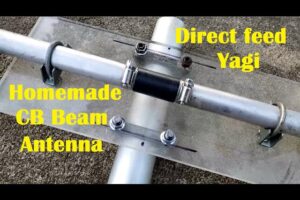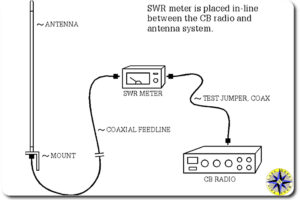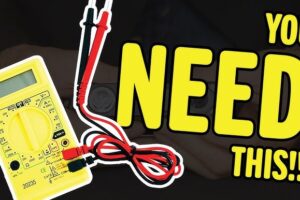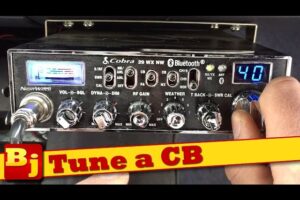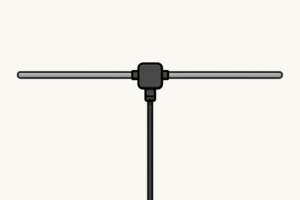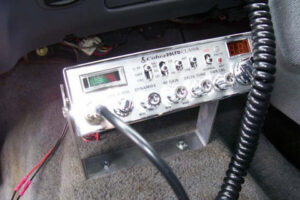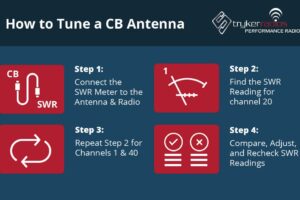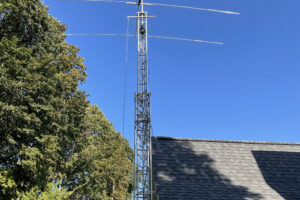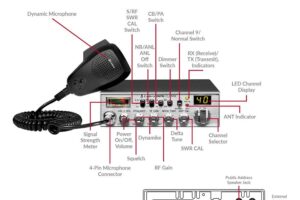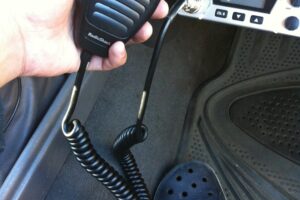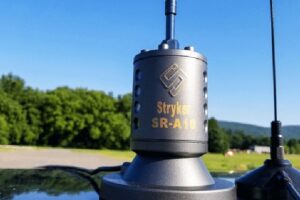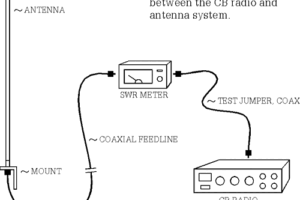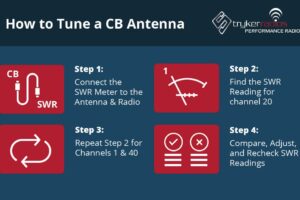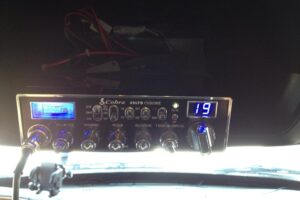How to Install CB Radio Antenna: A Step-by-Step Guide
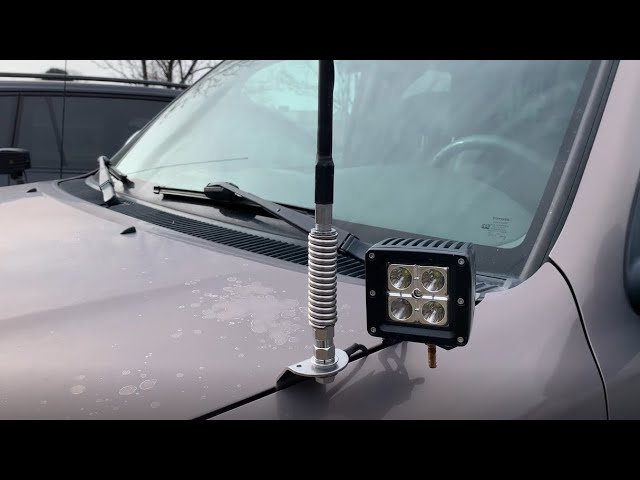
Installing a CB radio antenna is simple with the right steps. First, gather your tools and find a good location.
CB radios are great for communication, whether on the road or at home. To get clear signals, you need a well-installed antenna. This guide will help you set up your CB radio antenna correctly. You’ll learn about the best placement, proper connections, and tuning for optimal performance.
Follow these steps to ensure your CB radio works well and keeps you connected. Let’s get started on installing your CB radio antenna.
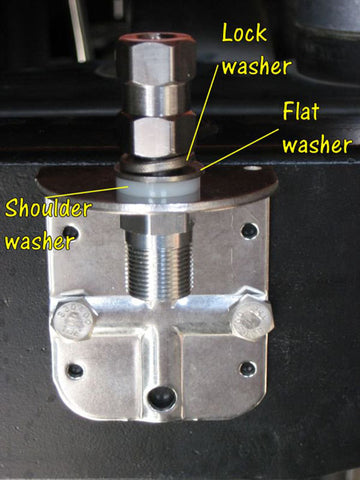
Credit: www.rightchannelradios.com
Introduction To Cb Radios
If you’re looking to stay connected on the road, a CB radio is an excellent choice. They are reliable, easy to use, and can be a lifesaver in emergency situations. Before you dive into installing your CB radio antenna, let’s get familiar with what a CB radio is and why it’s so beneficial.
What Is A Cb Radio?
A CB (Citizen’s Band) radio is a short-distance radio communication device. It operates on 40 channels within the 27 MHz band. Unlike other radio services, CB radios do not require a license for operation.
These radios are popular among truck drivers, off-roaders, and hobbyists. They are great for communication over short distances, generally up to 4-5 miles. The range can vary depending on the terrain and the quality of your equipment.
Benefits Of Using A Cb Radio
CB radios provide a reliable means of communication when you’re out of cell phone range. If you’re driving through remote areas, this can be incredibly useful. You can call for help, get traffic updates, or chat with other drivers.
Another advantage is the community aspect. Many CB radio users form tight-knit groups, sharing information and helping each other out. Imagine being stuck in a snowstorm and getting real-time updates from fellow drivers about road conditions.
Additionally, CB radios are cost-effective. They are relatively inexpensive compared to other communication devices. Once you purchase the radio and antenna, there are no ongoing costs like monthly service fees.
In my experience, having a CB radio has given me peace of mind during long road trips. It’s comforting to know that you have a reliable way to communicate, especially in areas where cell service is spotty. Have you ever been in a situation where a CB radio could have saved the day?
Choosing The Right Cb Antenna
Choosing the right CB antenna can significantly improve your CB radio’s performance. It’s crucial to understand the different types available and what factors you should consider before making a purchase. Let’s dive into the essentials of selecting the perfect CB antenna for your needs.
Types Of Cb Antennas
There are several types of CB antennas, each with its own advantages and disadvantages. Here’s a quick overview:
- Fiberglass Antennas: These are durable and resistant to weather conditions. Ideal for off-road vehicles.
- Whip Antennas: Known for their excellent range, but they are quite long and can be cumbersome.
- Magnetic Mount Antennas: Easy to install and remove, making them great for temporary setups.
- Base Station Antennas: These are designed for fixed locations and offer the best performance.
Each type has its own specific use case, so think about where and how you’ll be using your CB radio.
Factors To Consider
When choosing a CB antenna, several factors come into play. First, consider the length of the antenna. Longer antennas generally offer better range but can be more difficult to manage.
Next, think about the mounting location. The higher the antenna is mounted, the better the performance. However, it should be in a place where it won’t get damaged easily.
Durability is another crucial factor. If you’re going off-road, a rugged antenna like a fiberglass one might be your best bet.
Lastly, consider the ease of installation. If you’re not very tech-savvy, a magnetic mount antenna might be the easiest to set up.
Have you ever struggled with poor CB radio performance? It might be time to rethink your antenna choice. By considering these factors, you can ensure you’re getting the best possible performance from your CB radio.
What’s your biggest concern when choosing a CB antenna? Share your thoughts in the comments below!
Gathering Necessary Tools
Before you can start enjoying crisp communication with your CB radio, you need to gather the necessary tools for installing the antenna. This step is crucial to ensure a smooth installation process. Having everything you need at hand will save you time and frustration.
Essential Tools List
Here’s a list of essential tools you will need:
- Antenna: Choose one that suits your vehicle and needs.
- Antenna Mount: Securely attaches your antenna to your vehicle. Magnet mounts are great for temporary setups, while permanent mounts offer more stability.
- Coaxial Cable: Connects the antenna to your CB radio. Ensure it’s long enough to reach from the antenna to the radio.
- Wrench Set: Helps tighten bolts and screws. Metric or standard, depending on your vehicle.
- Drill: For permanent mounts, you’ll need to drill holes. Make sure your drill bits are appropriate for your vehicle’s material.
- Electrical Tape: Secures connections and protects them from the elements.
- Screwdriver Set: You’ll need both flathead and Phillips.
Optional Accessories
While the above tools are essential, some optional accessories can enhance your installation:
- SWR Meter: Helps you tune your antenna for optimal performance. It measures the standing wave ratio, ensuring your antenna is correctly adjusted.
- Antenna Spring: Absorbs impact and prevents damage to your antenna. This is especially useful if you drive in areas with low-hanging branches.
- Ground Strap: Improves the antenna’s grounding, which can enhance performance. It’s particularly useful in vehicles with poor grounding.
- Heat Shrink Tubing: Provides a more durable and professional finish to your electrical connections.
Do you have all these tools and accessories? It might seem like a lot, but having the right equipment will make your installation much smoother. Plus, it can save you from making frustrating trips to the hardware store in the middle of your project. So, gather your tools and let’s get ready to install that CB radio antenna!
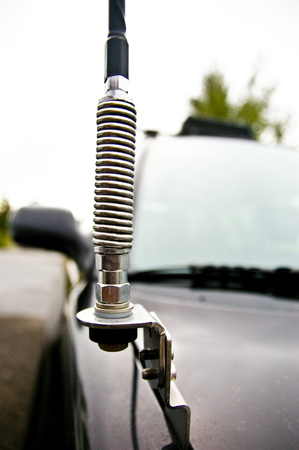
Credit: www.roadtripamerica.com
Preparing For Installation
Before installing a CB radio antenna, you must prepare properly. This step ensures the installation process goes smoothly and the antenna functions optimally. Let’s explore the key preparations for a successful installation.
Selecting An Installation Location
Choosing the right location is crucial. The antenna should be on a flat surface. This location should be free from obstructions. Mounting it high improves signal strength. Common spots include the roof or the trunk of a car. Ensure the spot is accessible for maintenance.
Safety Precautions
Always prioritize safety. Wear protective gloves to avoid cuts. Use insulated tools to prevent electric shocks. Ensure the vehicle is on a level surface. Turn off the vehicle’s power system. This prevents accidental short circuits. Keep a first-aid kit nearby for emergencies. Follow these steps to ensure a safe installation process.
Mounting The Antenna
Mounting the Antenna is a crucial step in ensuring your CB radio functions correctly. Proper mounting enhances signal reception and transmission, giving you the best communication experience. Let’s dive into the different mounting options and the step-by-step process to get your antenna up and running.
Mounting Options
When deciding where to mount your CB radio antenna, you have several options. Each has its benefits and drawbacks, depending on your vehicle type and personal preferences.
- Magnetic Mount: Easy to install and remove. Ideal for temporary setups or if you don’t want to drill holes in your vehicle.
- Mirror Mount: Common on trucks. Provides stability and a higher mounting point for better signal.
- Bumper Mount: Discreet and secure. Great for off-road vehicles and cars where aesthetics matter.
- Roof Mount: Offers the best performance due to higher elevation. Requires drilling and a more permanent setup.
Consider your needs and the type of vehicle you have. For instance, a magnetic mount might be ideal if you want flexibility.
Step-by-step Mounting Process
Now that you’ve chosen your mounting option, let’s go through the steps to mount your CB radio antenna.
- Gather Your Tools: You’ll need a wrench, screwdriver, and possibly a drill. Ensure you have everything before you start.
- Clean the Mounting Area: Whether it’s the roof, bumper, or mirror, ensure the area is clean. Dirt can affect the antenna’s grounding.
- Position the Antenna: Place the antenna in your chosen spot. Ensure it’s upright and stable. If using a magnetic mount, test the strength by gently tugging it.
- Secure the Antenna: Tighten bolts or screws as needed. For roof mounts, drill holes and use the provided hardware to secure the antenna base.
- Connect the Coaxial Cable: Run the cable from the antenna to your CB radio. Avoid sharp bends and keep it away from high-heat areas.
- Test the Setup: Turn on your CB radio and check the signal. Adjust the antenna if needed to improve reception.
Mounting your CB radio antenna correctly is essential for optimal performance. Take your time and ensure each step is done right. Have you ever mounted an antenna before? What challenges did you face? Share your experiences in the comments below!
Connecting The Coaxial Cable
Connecting the coaxial cable is a crucial step in installing your CB radio antenna. This ensures that signals transmit effectively between the antenna and the radio. Let’s break down the essential aspects you need to consider.
Cable Selection
Choosing the right coaxial cable can make a big difference in your CB radio setup. Your cable needs to be high-quality and suitable for the distance between your antenna and radio. RG-58 and RG-8X are popular choices due to their flexibility and performance.
Consider the length of the cable you need. Too short and it won’t reach; too long and it might cause signal loss. Measure the distance accurately before making your purchase.
Investing in a good cable will save you headaches down the line. Cheap cables can lead to poor signal quality and interference. It’s worth spending a bit more for better performance.
Connecting The Cable To The Radio
Once you have your cable, connecting it to the radio is straightforward. Start by locating the antenna input on your CB radio. It’s typically marked clearly and easy to find.
Next, attach one end of the coaxial cable to the antenna input. Make sure it’s securely fastened to avoid any loose connections. A loose cable can lead to poor signal transmission.
Run the cable to your antenna, ensuring it’s not pinched or twisted along the way. Connect the other end to the antenna. Double-check both connections to ensure they are tight.
Have you ever struggled with poor signal quality? Often, the issue lies in the cable connection. Double-checking can save you time and frustration.
By following these steps, you will ensure your CB radio antenna setup is optimal. Don’t overlook the importance of the coaxial cable; it’s the lifeline of your signal.
Tuning The Antenna
When you install a CB radio antenna, tuning it is a crucial step. Properly tuning your antenna ensures you get the best performance from your CB radio. Let’s dive into why tuning is essential and how you can do it yourself.
Why Tuning Is Important
Tuning your CB radio antenna is vital for several reasons. First, it optimizes your signal strength, ensuring clear communication. A well-tuned antenna reduces interference, making your conversations more reliable.
Moreover, it protects your equipment. An untuned antenna can cause your CB radio to overheat and damage its internal components. By tuning the antenna, you ensure longevity and efficiency.
Have you ever noticed poor reception or static noise? That’s often due to an untuned antenna. A properly tuned antenna makes a world of difference in overall performance.
Steps To Tune Your Antenna
Tuning your antenna is simpler than you might think. Follow these steps to get it right:
- Gather Your Tools: You’ll need an SWR meter, a short coaxial cable, and your CB radio. Make sure everything is in good working condition.
- Connect the SWR Meter: Disconnect the antenna cable from your CB radio. Connect the SWR meter between the radio and the antenna using the coaxial cable.
- Set the SWR Meter: Turn on your CB radio and set it to channel 1. Switch the SWR meter to the “FWD” position.
- Calibrate the SWR Meter: Key the microphone and adjust the meter’s calibration knob until the needle reaches the “SET” mark. Release the microphone key.
- Take the SWR Reading: Switch the meter to the “REF” position. Key the microphone again and note the reading. Repeat this process on channel 40.
- Adjust the Antenna: If the readings are higher on channel 40 than on channel 1, shorten the antenna. If higher on channel 1, lengthen the antenna. Make small adjustments and recheck the SWR readings.
- Final Check: Aim for an SWR reading below 2:1 on both channels. Once achieved, your antenna is tuned.
Tuning your CB radio antenna doesn’t have to be daunting. With a bit of patience and the right tools, you can do it yourself. Have you tuned your antenna before? Share your experience and tips in the comments below!
Testing And Troubleshooting
Once you’ve installed your CB radio antenna, the next step is testing and troubleshooting. This ensures everything is working correctly and helps you identify and fix any issues that might arise. Testing might seem like a hassle, but it can save you from bigger problems down the road.
Initial Testing Steps
Begin by turning on your CB radio. Check if it’s powering up properly. If it doesn’t, recheck your connections and power source.
Next, set the radio to channel 19, the most commonly used channel for testing. Make sure you can hear other transmissions clearly. If the channel is silent, try adjusting the squelch knob until you hear static.
Transmit a test message by pressing the microphone button. Speak clearly and ask for a radio check. If someone responds, your setup is likely working.
Common Issues And Solutions
Issue: No Power
Solution: Check the power connections. Ensure the radio is properly connected to the power source. Look for blown fuses and replace them if necessary.
Issue: Poor Reception
Solution: Make sure the antenna is mounted correctly and not obstructed. Check the antenna’s ground connection. Sometimes moving the antenna to a higher spot can improve reception.
Issue: Poor Transmission
Solution: Verify the SWR (Standing Wave Ratio). High SWR can damage the radio. Use an SWR meter to check and adjust the antenna length for optimal performance.
Remember, patience is key. Testing and troubleshooting might take some time, but it’s worth the effort. Have you ever had a tricky issue with your CB radio that took ages to solve? Share your story in the comments!
Maintenance Tips
After you’ve successfully installed your CB radio antenna, keeping it in top shape is crucial for optimal performance. Regular maintenance ensures your antenna remains in good condition, extends its lifespan, and maintains clear communication. Here are some practical tips to help you maintain your CB radio antenna effectively.
Routine Maintenance
Regular checks are essential. Inspect your antenna and its mount every few weeks. Look for signs of wear, rust, or loose connections.
Clean the antenna using a damp cloth. Dirt and grime can affect signal quality. Avoid using harsh chemicals; they can damage the antenna’s surface.
Check the coaxial cable for cracks or frays. A damaged cable can lead to poor signal transmission. Replace it if you notice any damage.
Ensure the SWR (Standing Wave Ratio) is within acceptable limits. A high SWR can harm your radio. Use an SWR meter to monitor and adjust if needed.
When To Replace Your Antenna
Even with the best care, antennas wear out over time. How do you know it’s time to replace yours?
If you notice a significant drop in signal strength, it might be time for a new antenna. Consistent communication problems are a red flag.
Physical damage is another indicator. If the antenna is bent or broken, replacement is often the best option.
Old age is a factor too. If your antenna is several years old, consider an upgrade. Modern antennas are more efficient and durable.
Take good care of your CB radio antenna. It ensures reliable communication and saves you from frequent replacements. What maintenance tips have you found useful? Share your experiences in the comments!
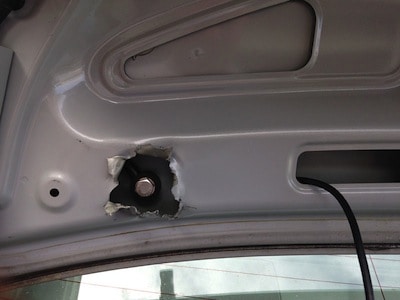
Credit: www.wearecb.com
Frequently Asked Questions
How Should A Cb Antenna Be Mounted?
Mount the CB antenna on a high, flat surface. Ensure it is vertically aligned. Keep it away from obstructions. Ground it properly for optimal performance. Adjust the antenna for the best SWR (Standing Wave Ratio) reading.
Does My Cb Antenna Need To Be Grounded?
Yes, your CB antenna needs to be grounded. Grounding improves performance and ensures safety by reducing electrical interference.
How Do I Increase The Signal Strength On My Cb Radio?
Increase CB radio signal strength by using a high-quality antenna, ensuring proper grounding, tuning your antenna, and using an SWR meter. Maintain clear line-of-sight and reduce interference.
How To Run Cb Antenna Wire?
Run the CB antenna wire from the antenna to the radio. Avoid sharp bends and interference sources. Secure it with clips.
Conclusion
Installing a CB radio antenna is straightforward. Follow the steps carefully. Ensure a sturdy mount. Check your connections twice. This avoids signal issues later. Use quality cables for better reception. Don’t rush the tuning process. It’s crucial for clear communication.
Adjust the antenna height if needed. This can improve signal range. Regular maintenance keeps your system working well. Clean your antenna periodically. It prevents dirt buildup. Remember, practice makes perfect. Each installation gets easier. Share your experience with others. It helps them too.
Enjoy your CB radio adventures. Stay connected with fellow enthusiasts. Safe travels!

